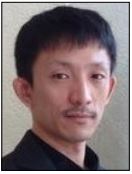Date
Cost
Free and open to the public
Location
Research Pavilion, Room 475 (NanoScience Technology Center)
Description
A general solution to the energy and environmental crisis is to develop sustainable energy devices that can produce and store energy inexpensively and efficiently. It is feasible to improve the energy conversion and storage performance through tailoring the density of active sites within a defined nanostructure having a high surface area. A facile and scalable anodization technique is used to fabricate different kinds of robust and porous films for renewable energy generation and storage. Four sub-topics will be presented. First, I will present how to create more active edges in 2D materials (e.g. WSsub>2) for efficient hydrogen evolution reaction (HER). And then I will discuss how to make Co-Ni oxides work better as oxygen evolution reaction (OER) catalysts by forming porous structures. Thereafter, I will demonstrate how to make pure metal compounds (e.g. NiF2) flexible and free-standing without carbonaceous materials to support the nanostructures. And how to use this porous and flexible NiF2 as Li-free battery-like energy storage device. Lastly, I will report an approach to improve the Li-ion battery performance of Fesub>2Osub>3 by forming a heterogeneous structure.
Presenter

Yang Yang, Ph.D.
Department of Chemistry
Richard E. Smalley Institute for Nanoscale Science & Technology
Rice University
Contact
Rebeca Barrios NanoScience Technology Center 407-882-1515 NSTCsearch@ucf.edu